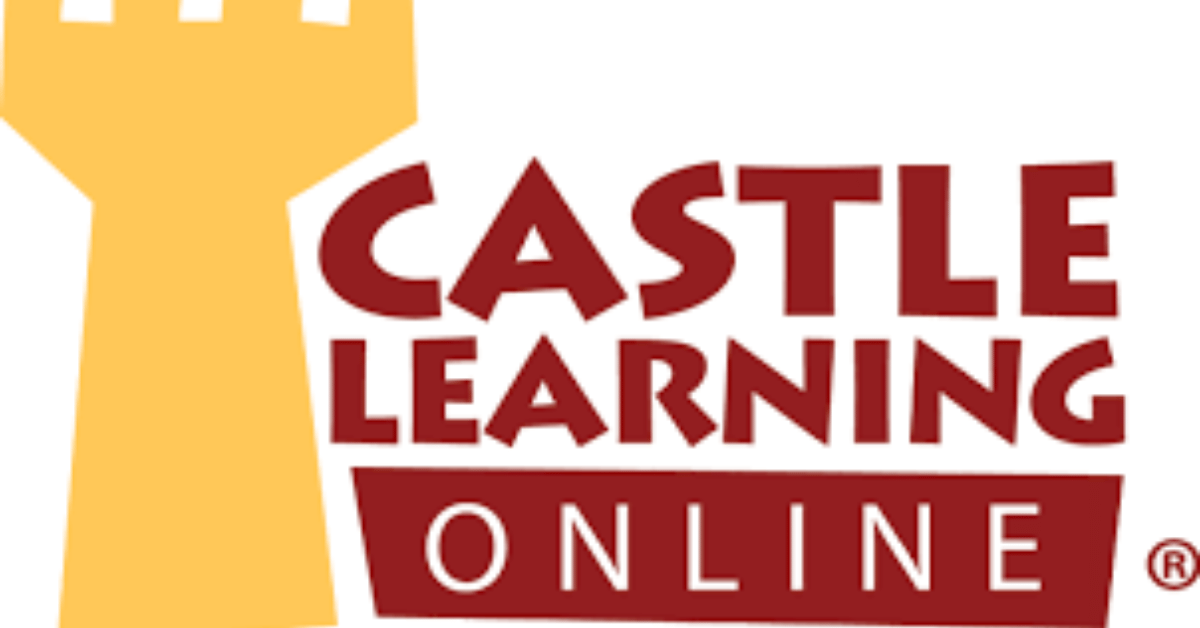Castle Learning is an educational platform designed to enhance student learning through standards-based assignments, assessments, and practice tools tailored for K-12 schools. For educators and students searching for a reliable system to track progress, reinforce concepts, and improve test readiness, Castle Learning offers a comprehensive digital solution. The platform integrates seamlessly into classroom instruction, supporting teachers with data-driven insights while giving students opportunities to practice and master content independently. In this article, we will delve into what Castle Learning is, how it works, its key features, benefits, and practical applications in schools. We’ll also discuss its impact on educational outcomes, with detailed tables comparing features and common usage scenarios, ensuring readers gain a thorough understanding of the system and how it can best serve various educational needs.
What is Castle Learning and Who Uses It?
Castle Learning is an online learning and assessment platform that primarily serves K-12 educational institutions. The platform offers teachers a way to assign homework, quizzes, tests, and practice exercises aligned to state and national academic standards. Unlike generic homework platforms, Castle Learning focuses on rigorous, standards-based content that supports curriculum goals. Teachers can monitor student progress in real-time, identify areas of weakness, and customize assignments to target specific skills or knowledge gaps. Students benefit from immediate feedback on assignments, instructional support, and a personalized learning experience that reinforces classroom teaching. School administrators also gain insights into overall student performance and curriculum effectiveness. Its user base includes public and private schools, charter schools, and homeschooling environments looking to leverage digital tools for academic growth.
The Core Features of Castle Learning
Castle Learning’s strength lies in its combination of assessment and instructional resources tailored to K-12 education. Here are some of its core features:
- Standards-Aligned Content: The platform offers thousands of questions and assignments mapped to Common Core, state, and other standards, ensuring content relevance.
- Assignment Variety: Teachers can assign homework, quizzes, unit tests, cumulative exams, and standardized test practice.
- Instant Feedback: Students receive immediate grading and explanations, promoting self-correction and deeper understanding.
- Data Analytics: Detailed reports help educators track individual and group progress over time.
- Customizable Assignments: Teachers can create or modify assignments to fit classroom pacing and learning objectives.
- Parent and Student Portals: Secure access points allow families to monitor student work and progress.
- Integration Capabilities: Castle Learning integrates with various Learning Management Systems (LMS) for streamlined workflows.
- Practice Mode: Students can work on skills at their own pace without the pressure of grades.
Table 1: Summary of Castle Learning Key Features and Benefits
| Feature | Description | Benefit to Users |
|---|---|---|
| Standards-Aligned Content | Curriculum-aligned questions and assignments | Ensures academic relevance and consistency |
| Variety of Assignments | Homework, quizzes, unit tests, and exam preparation | Supports multiple assessment types |
| Immediate Feedback | Auto-grading with explanations | Enhances student self-learning and error correction |
| Detailed Reporting | Performance analytics at student and class levels | Enables targeted instruction and intervention |
| Customizable Content | Teacher-created or modified assignments | Flexibility to meet diverse classroom needs |
| Student & Parent Portals | Secure access for student progress monitoring | Encourages engagement and transparency |
| LMS Integration | Compatibility with popular LMS platforms | Simplifies administrative tasks |
| Practice Mode | Non-graded practice exercises | Promotes mastery and confidence |
How Castle Learning Supports Standards-Based Education
One of the major draws of Castle Learning is its rigorous alignment to educational standards. The platform’s question bank is meticulously mapped to standards like Common Core Math and English Language Arts, Next Generation Science Standards (NGSS), and state-specific benchmarks. This allows educators to ensure their instruction meets mandated learning goals and prepares students for high-stakes testing. In practice, a math teacher can assign problems targeting specific standards like linear equations or geometry proofs, with Castle Learning automatically providing the corresponding content. This precision helps avoid the common mismatch between classroom teaching and standardized assessments.
Moreover, this alignment facilitates differentiated instruction. Since the system tracks performance per standard, teachers can identify which students struggle with certain concepts and tailor assignments accordingly. A teacher might assign remedial practice on fractions to one group while challenging another with advanced problem-solving tasks. The granular data also aids in curriculum planning, ensuring that all required standards are comprehensively covered before major exams.
The User Experience: For Teachers and Students
Castle Learning is designed with usability in mind, recognizing the different needs of teachers and students. The teacher dashboard offers an intuitive interface to create, assign, and review work, complete with analytical tools. Teachers can view class-wide performance trends or drill down to individual student reports, making it easy to intervene early or celebrate achievements. The platform supports scheduling, allowing assignments to be timed around lesson plans or standardized testing calendars.
For students, the experience balances structure and flexibility. Upon logging in, they access assigned tasks, receive real-time feedback on answers, and see hints or step-by-step solutions to reinforce learning. The practice mode removes grading pressure, letting students explore concepts until mastery. A quote from educational technology expert Dr. Linda Smith emphasizes this point: “Immediate, actionable feedback transforms students from passive recipients to active learners.”
This focus on user experience supports Castle Learning’s goal to engage students meaningfully and empower teachers with actionable data, fostering an environment where continuous learning thrives.
Table 2: Comparison of Castle Learning User Experience for Teachers vs. Students
| Aspect | Teacher Experience | Student Experience |
|---|---|---|
| Interface | Dashboard for assignment creation, analytics, grading | Assignment list, instant feedback, practice mode |
| Data Access | Detailed reports by standard, individual, and class-wide | Performance summaries and answer explanations |
| Customization | Modify questions, create new assignments | Adaptive practice, retry options |
| Feedback | View auto-graded results, export data | Immediate grading, stepwise hints |
| Integration | Sync with LMS and school databases | Single sign-on, seamless access |
| Support | Tutorials, customer support, professional development | On-platform help, explanations, learning tips |
Impact on Academic Achievement and Test Preparation
Research consistently highlights the role of formative assessment and targeted practice in improving student outcomes. Castle Learning’s model, which combines standards-aligned content with immediate feedback and data-driven adjustments, embodies these principles. Educators report improvements in student test scores, engagement, and confidence after integrating Castle Learning into their instruction.
For standardized test preparation, the platform offers tailored practice tests mirroring formats and content of state exams or national assessments like the SAT or ACT. This targeted preparation familiarizes students with question types, timing, and pressure, which can reduce test anxiety. As Dr. James Carter, a veteran educator, notes, “Practice under realistic conditions using data-backed tools is key to student success.”
Castle Learning also supports longitudinal tracking, enabling educators to monitor growth over years, adjust teaching strategies, and identify persistent challenges early. The actionable data helps schools refine curriculum and professional development initiatives.
Implementation Considerations and Best Practices
While Castle Learning offers robust capabilities, successful implementation requires planning and training. Schools must ensure infrastructure support, such as reliable internet access and device availability. Teacher training is essential to maximize the platform’s potential, emphasizing data interpretation and assignment customization. Encouraging student buy-in by demonstrating benefits can improve engagement.
Integration with existing LMS platforms can streamline administrative processes and reduce redundancy. Additionally, schools should consider establishing schedules for regular progress reviews and data-driven instruction adjustments. Castle Learning’s flexibility allows adoption in blended, flipped, or fully remote learning environments, adapting to evolving educational models.
Conclusion
Castle Learning represents a modern approach to education, combining rigorous standards alignment with interactive digital tools that support both teaching and learning. Its comprehensive features address the needs of students striving to master concepts and teachers seeking to deliver effective, data-driven instruction. By offering immediate feedback, rich analytics, and customizable assignments, Castle Learning fosters an environment where students gain confidence and improve academically. The platform’s alignment with standards ensures relevance and readiness for high-stakes testing, while its user-friendly interfaces promote engagement. As Dr. Emily Johnson, a curriculum specialist, observes, “Educational technology like Castle Learning is not about replacing teachers but empowering them and students alike to reach higher levels of achievement.” In an increasingly digital world, Castle Learning provides a vital resource to bridge classroom instruction with measurable learning outcomes, making it a valuable asset for schools committed to academic excellence.
FAQs
Q1: Is Castle Learning suitable for all grade levels?
Yes, Castle Learning serves K-12 education, with tailored content for elementary through high school subjects.
Q2: Can Castle Learning replace traditional homework?
It is designed to supplement or replace traditional homework with standards-aligned, digitally accessible assignments.
Q3: Does Castle Learning support multiple subjects?
Yes, it covers math, English, science, social studies, and foreign languages, among others.
Q4: How does Castle Learning support differentiated instruction?
Through customizable assignments and detailed data reports that identify individual student needs.
Q5: Is parental access available?
Yes, parents can access student progress via secure portals to stay informed and support learning.











